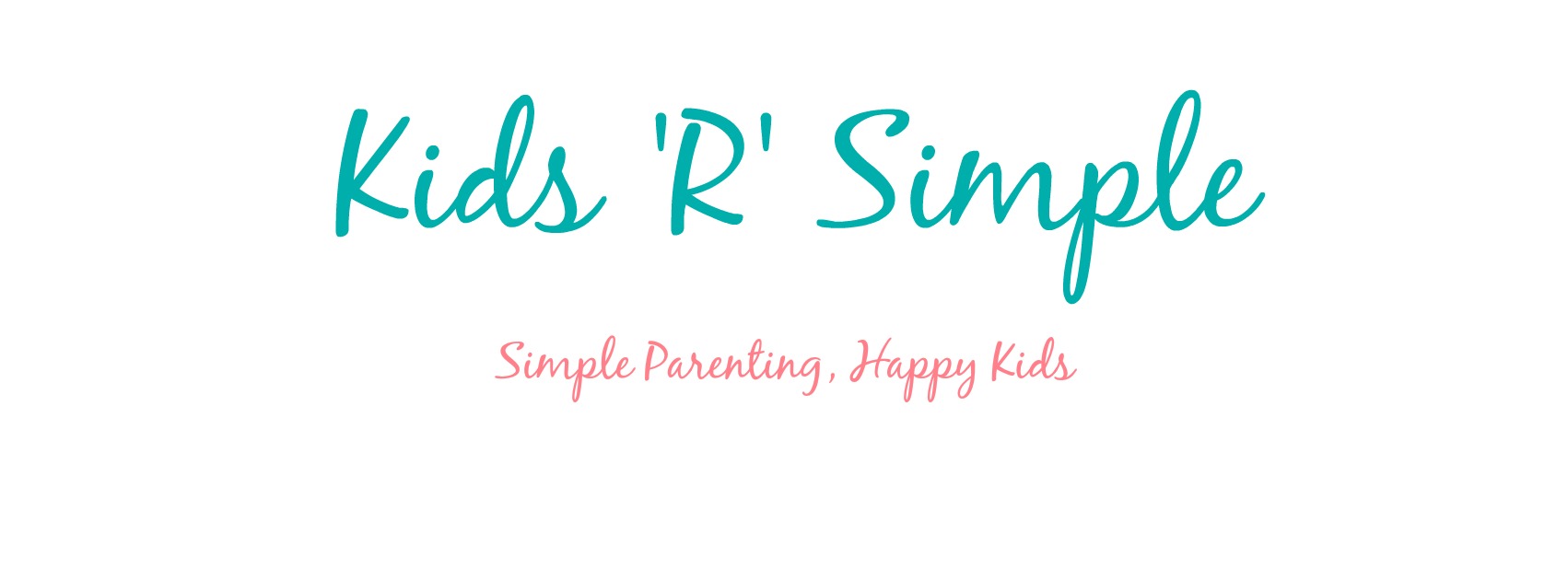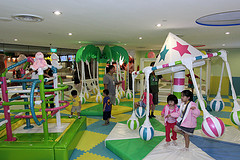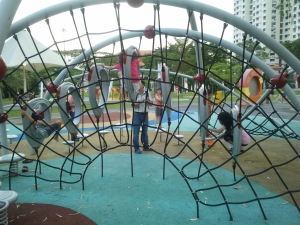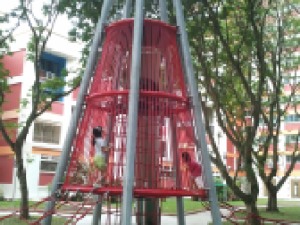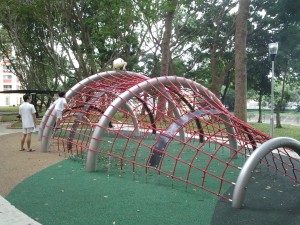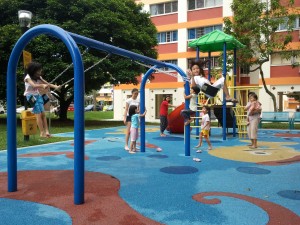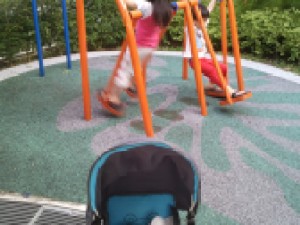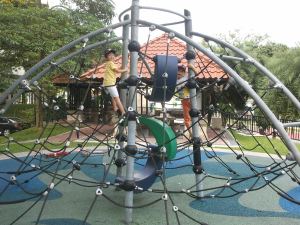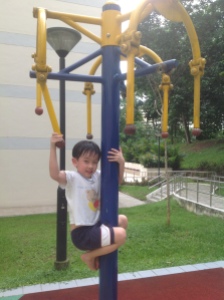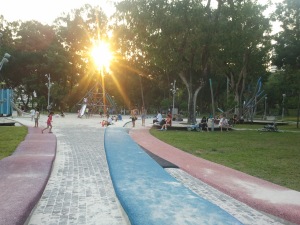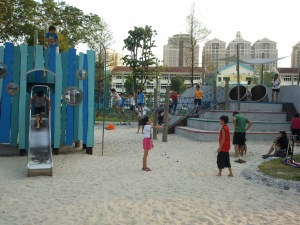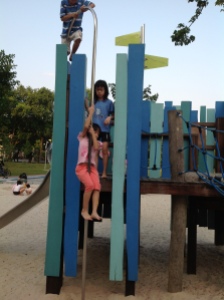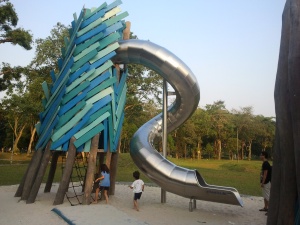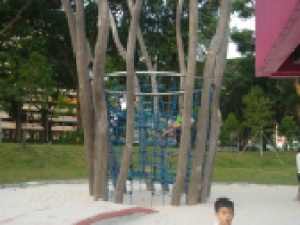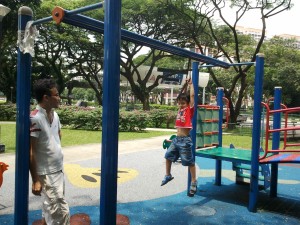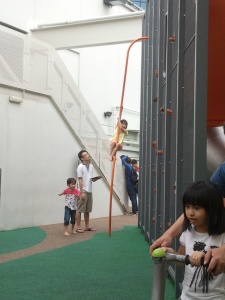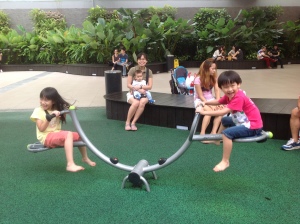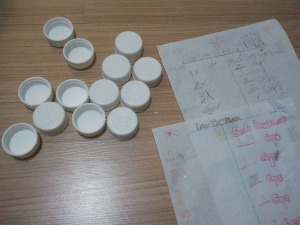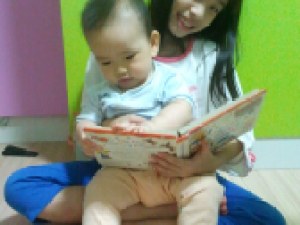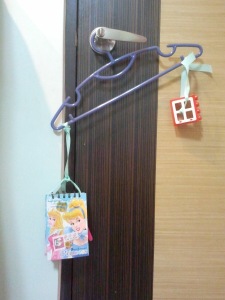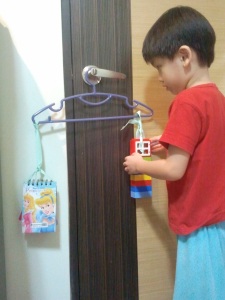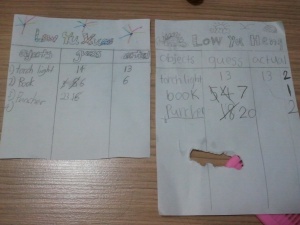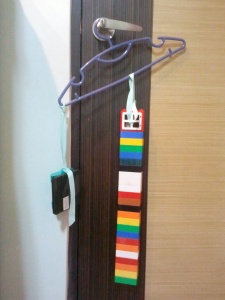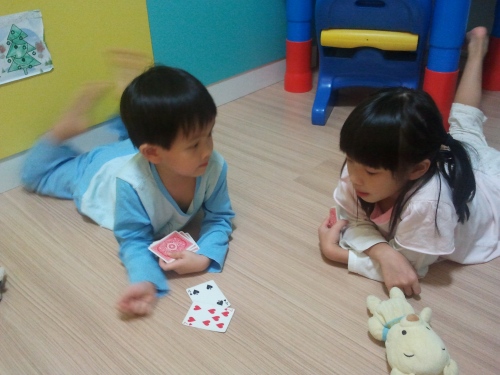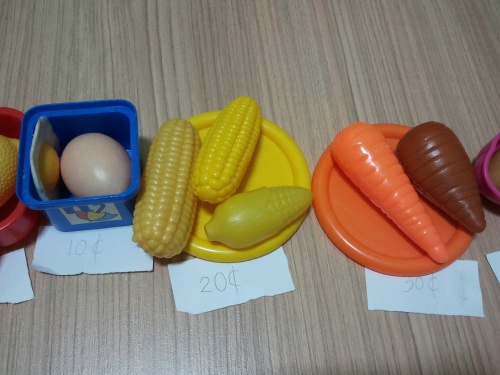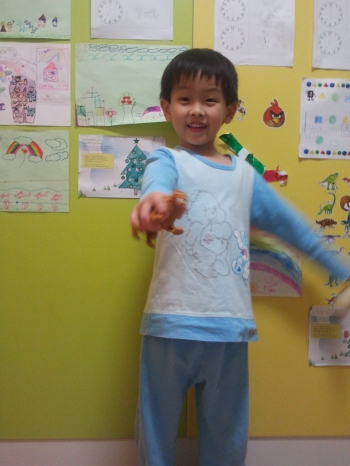Here are my 5 simple indoor places to bring your kids to.
1. Indoor Playground (Fidgets)
This is located in Old Turf City at Bukit Timah Road.
Like many indoor playground, it has all the play areas. But what we like about this place is that it has a separate area for below 2 years old, a separate one for 2-4 years old and the main play area for all ages. The large main play area has many play themes that kids will not be bored with. The cafeteria and sofas are just beside the younger play areas. Parents will be able to enjoy a cup of coffee while keeping a lookout for their young ones.
Admission fees: $19 (2-10 years old), $10 (under 2 years old), free (adults and babies under 1 year old)
2. Time zone Arcade
We like the Time zone Arcade at Compass Point. It has many games appropriate for younger kids. The popular ones are the small bowling lanes, basketball throws, Percussion game, roll up balls into holes, and Air Hockey Table game. After the games, kids can have the joy to redeem the gifts using their e-tickets.
Fees: A pre-paid Timezone card to play the games
3. Safra Yishun Swimming Pool
This is our favourite swimming pool so far. Safra Yishun Swimming Pool has 1 long slide and 1 short slide that all ages can play. There is a man-made waterfall where you can stand under to enjoy the pitter-pattering of water on your shoulders. (However, recently the slides have been closed for renovations.) There is a baby pool, a learning pool for kids, an Olympic size pool and a pool with Jacuzzi. Music is played throughout the day and on some weekdays evening, they play romantic songs and soothing music while you soak in the pool.
Another attractive feature of the pool is that there is warm water for shower which is important when you have kids. You will find that bathing them is a breeze. The luxurious space in the shower area and separate changing area is definitely another draw for us. You do not need to bring along shampoo and shower gel as each shower room has a shampoo cum shower gel dispenser unless you prefer using your own.
Admission Fees: Free for Safra members, $3 for guest on weekends
(This place is actually outdoor, but I find it such a cozy setting especially in the evening, I have decided to add to this list.)
4. ChangiAirport Terminal 3
Amazingly, Changi Airport Terminal 3 is SO kids-friendly, tourists or passengers in transit would have mistaken the terminal as a shopping mall rather than an airport. Weekends are packed with families with young kids. What’s fun is an area with big stencil tracing blocks where kids or adults can colour on with the crayons and paper available. Also, there is a 12 metre tall jumbo twister slide and a shorter one for the less adventurous. There is an area for television viewing tuned to Cartoon network where you can deposit your kids there while you shop around the vicinity.
Not only that, there is an indoor playground located in Terminal 3 , B2 as well. It’s called Singkids. Check out this Japanese designed PlaySystem as they called it!
Admission Fees: Singkids – $18 per 2 hrs (off-peak), $18 per hour (peak)
5. Ikea Tampines
Ikea is a famous kids-friendly furniture mall. Over at Ikea Tampines, there is an indoor play area for kids while the parents shop around or enjoy the famous Swedish balls at the cafeteria near it. Even the cafeteria has a small round play area for kids while the parents eat and watch their kids beside it. Kids above 4 can sign up as members of småles kids club where they can have a sticker with each visit and use the stickers to redeem small gifts.
Shopping at Ikea is a pleasant experience. The kids can’t wait to reach the kids furniture area where all the things are kids’ size. There are toys to play too. Everything is so adorable even to the eyes of parents; it’s hard not to get something from here.
Admission Fees: Free
Do you have other interesting places to bring kids to?
